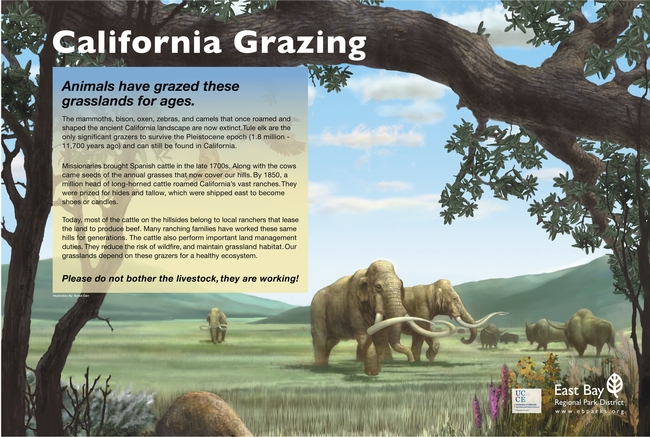
- vegetation and watershed management
- fire fuel control
- management of habitat of rare and endangered species.
UC Cooperative Extension created, “Ecosystem Services Curriculum and Interpretative Trail Signage”, to increase awareness and knowledge of park visitors, managers and decision makers about working rangelands and the ecosystem services. Bay area open space lands provide an unprecedented opportunity to educate both the public and policy makers and the ecosystem service curriculum, “Understanding Working Rangelands” in cooperation with the Sonoma County Regional Parks, targets decision makers, park interpreters, and park users that visit these grazed open space annually in Sonoma County. Curriculum on beef cattle husbandry, cattle behavior, grazing management, ranching economics and infrastructure is found in a series of fact sheets and interpretative trail signage (1 of 3 panels pictured below) on working rangelands.
Whether working ranches are on public or private land, many Sonoma County ranchers represent the fourth, fifth, or sixth generations that have stewarded the land and their livestock. These working ranches also contribute over $30 million per year to Sonoma economy and represent the third-highest value agricultural commodity in the region (Sonoma County Crop Report 2015). These ecosystem services also provide improved overall human health, through increased park and trail access. A more informed public will lead to a stronger social cohesion between beef cattle grazers and the park users. This is an opportunity to strengthen the health and outdoor connections on working landscapes, i.e. rangelands, through ecosystem services curriculum and interpretive trail signage.
Attached Images:

